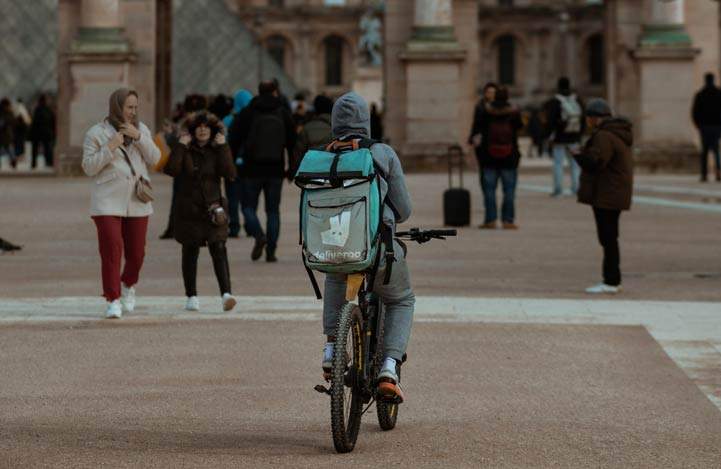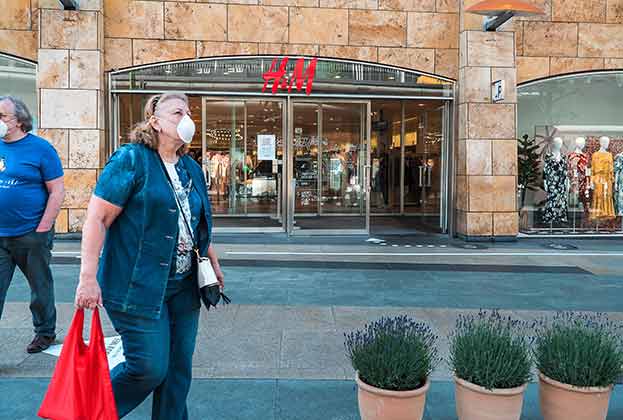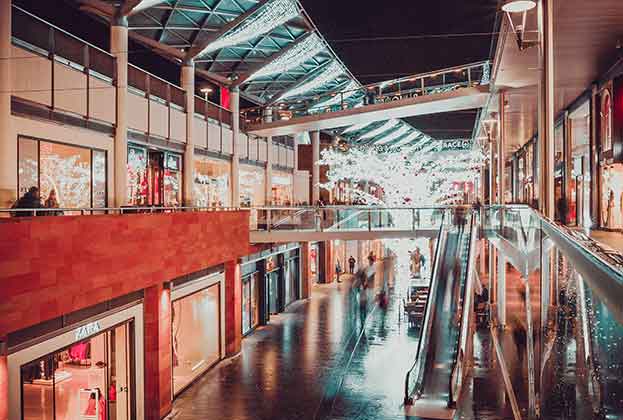Supermarkets have been one of the most resilient sectors during this crisis, but they are not immune to disruption caused by online shopping
During times of uncertainty, investors are seeking sectors with defensive characteristics and stable income streams. Supermarkets have been one of the most resilient sectors during this crisis, as they were among the few retail formats that remained open during the lockdowns. Combined online and onsite sales have driven turnover growth, compared to previous years.
Food retailing has also remained largely immune to digital disruption—until recently. Although generally, consumers prefer to shop fresh products in physical stores, since the outbreak of the pandemic online food sales have grown strongly around the world. In China, for example, Carrefour's deliveries for the New Year, which took place a few weeks after the outbreak of the epidemic, increased by 600%. The situation in Europe is no different: in Italy and Spain, the number of e-food users doubled and in Germany, sales in online food retailing in the second quarter of the year rose by 90% compared to 2019.
According to a survey of PwC in May, more than a quarter of all European consumers in urban areas (28%) bought food mainly online during the first lockdown. And the longer the pandemic lasts, the greater the effect of this new habit is likely to be, especially since online trading seems even more convenient than it already is, in view of the measures of social distancing that apply to physical retailing for as long as the virus spreads. It is therefore predicted that more than 80% of consumers who bought food online for the first time during the pandemic want to continue doing so. Newcomers in this field have had positive experiences with the convenience and quality of fresh food. This has helped them to overcome quality concerns, which had previously deterred them from shopping online.
Improvement of online shopping experience has become one of the main priorities of grocery groups. In Spain, Mercadona invested €20 million in updating its online sales website already in 2018 and has recently set up a 15,000 sq m distribution centre exclusively for online services. El Corte Inglés and Carrefour offer deliveries in less than two hours, or collection from stores. The Schwarz Group, which owns Lidl, has bought one of the largest e-commerce sites in Germany. In Italy, discounter Penny is experimenting with an online delivery service in Milan and Catania, Sicily, called 'Penny a Casa'. Likewise, UK grocery retailer Sainsbury's has announced that it will continue to expand its online offering in the coming months and already delivers 700,000 orders per week, twice as many as before the start of the pandemic.
The rising investment in omnichannel strategies and the costs related to e-commerce and logistics, put pressure on retailers’ margins. Grocers are seeking alliances to achieve economies of scale and develop concepts, which will attract and retain customers. In Spain, Amazon has an agreement with DIA and in the UK with Morrisons, for delivery and distribution in different parts of the country. Following the immense increase in demand for home delivery during the lockdown, some retailers have partnered with delivery companies. In Spain, Glovo has signed agreements with Carrefour and in Dublin Aldi has signed an agreement with Deliveroo. In the UK Aldi is also in cooperation with Deliveroo, which started in May, was extended to 130 shops recently and more are expected to follow.
From a real estate perspective, grocers are getting more value from their existing stores by using them in some areas as fulfilment centres for last-mile delivery. Additionally, they develop pick-up stations, drive-in counters for Click & Collect services and even micro-fulfilment centres attached to the stores. The improvement of their online services and the wider customer reach they achieve, will also allow them to consolidate their network of stores and focus on new expansion strategies, such as convenience stores or additional services, such as catering and others. In the following section, we discuss some of the latest trends that have an impact on food retailer’s space requirements.

Buy online, pick-up elsewhere
Click & Collect, Click & Drive or Pedestrian Drives are some of the delivery formulas that are gaining more weight every day. The aim is to make shopping easier for customers by adapting to their lifestyle. In Spain, BonÁrea supermarkets offer the possibility of delivering the products in boxes so that they can be picked up later during the day and at a time that is most convenient for the customer. In Europe, home delivery systems are already being tested at times when the customer is not there (While you’re away) or in the boot of their cars.
In France, 68% of the consumers that shopped online in 2020 chose a Pick-up & Go location for their orders, while 28% opted for Click & Collect directly in the physical store (Statista based on FEVAD/CSA). In Italy, the volume of Click & Collect tripled in February (Nielsen). Esselunga is developing its Click & Collect service (Click & go locker) by allocating lockers in supermarkets for this purpose (also suitable for refrigerated food) in order to pick up in-store. Additionally, it is developing the Click and go concept along busy commuting routes, with space where people can drive through and pick up their shopping, without stepping out of the car.
In the UK, Aldi will expand its Click & Collect service from the current 18 to 200 shops by Christmas, serving around a quarter of its 900 shops. In Germany, discounter Netto is trying out a pick-up service while supermarket REWE is opening hundreds of Click & Collect pop-up stations.
The Click & Drive format is also gaining ground, as it saves retailers from home deliveries and the costs associated with the last-mile delivery. Instead, they invest in drive-in locations where consumers can pick up their goods without having to get out of their cars. This concept has been established in France already for more than a decade by supermarket retailers such as Auchan, Intermarché, Leclerc, Cora, Carrefour and Casino. The model has since been very successful, and the number of drive-in stores was still expanding over the past two years.
Downsizing for convenience
During the lockdown periods, smaller (<1,000 sqm), neighbourhood supermarket stores have seen higher turnover density, due to accessibility. A shift that had already started pre-Covid, was indeed the focus of large chains in medium to small-sized units in urban locations, easily accessible by customers. This is a trend embraced both by mainstream as well as value chains. In Italy, Esselunga has announced plans to expand the rollout of its La Esse proximity store format. Aldi last year rolled its first Aldi Local concept in London revealing its plans to increase its number of new standard-sized and high street-focused stores. Lidl has also reduced its size requirements, looking to expand in urban locations. SPAR Netherlands has launched a new convenience concept, SPAR City small. These stores are designed for high traffic locations, with the first store having opened in Utrecht and are aimed at urban and millennial shoppers. The new concept is just 80 sq m.
Dark supermarkets
Most supermarkets prepare the orders from the shop itself with the consequent impact on cost or the lack of available product at the time of the order. Dark stores arise to respond to these needs. These are operational warehouses for the preparation and shipment of orders arriving from the online shop. Located in densely populated areas, their distribution is the same as that of a shop; however, the main point of difference is that they have not been designed for direct sales. For many retailers, this could become an effective way of converting poorly performing stores into dark stores that add value to the online retail infrastructure.
'Grocerants' and other innovations
Supermarkets have also been working on upgrading their offer with freshly made food and even areas of onsite consumption such as bars and restaurants (Esselunga in Italy, Albert Heijn in the Netherlands) Catering and food come together and the concept of 'Grocerants' is created as a hybrid concept between a food shop and a restaurant. Such is the case of DIA in Spain, which has introduced Dia&Go where they have a breakfast service in the supermarket, El Mercado de Carrefour that offers food halls with different spaces dedicated to food or Mercadona that has included a takeaway section in its supermarkets. In Italy, La Esse in Milan combines a café/restaurant, a co-working space, and a traditional supermarket space. In the Netherlands, Jumbo has included in its store in Utrecht on-site food preparation such as Mexican street food and Hawaiian poke bowls, while the Albert Heijn concept store in Hoofddorp includes a self-serve herb garden, patisserie and cocktail island.
Read the articles within Spotlight: Retail investment – Focus on Food below.
.jpg)

.jpg)
